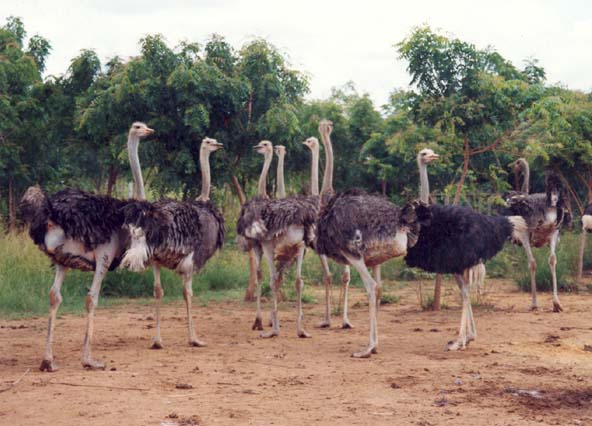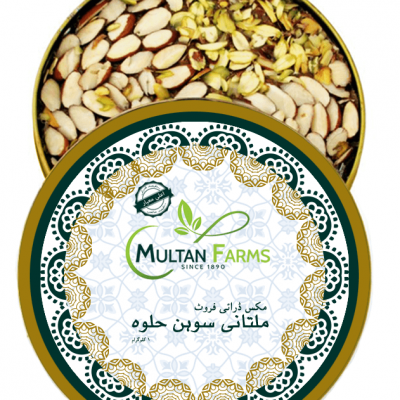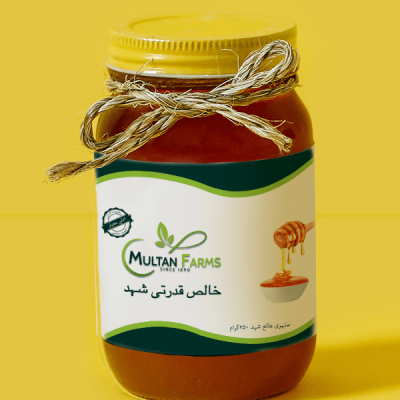The ostrich is undoubtedly the world’s largest living bird. Adult males stand 2.4 m tall and can weigh well over 100 kg; the hen is slightly smaller. Ostriches are flightless birds, with their great body size and reduced wing size rendering them incapable of flying. They have a long neck, long bare legs and two toes. Their strong legs allow them to run up to 70 km per hour when necessary, with strides of up to 8 m. Neck and thigh muscles are well developed and unfeathered.
Since ancient times, ostriches have aroused people’s interest. Apart from being hunted for their flesh and plumes, ostriches were kept in captivity, tamed and semidomesticated by the early Egyptians, Greeks and Romans. Egyptians and Roman women of noble birth rode ostriches on ceremonial occasions. There are descriptions in Tutankhamen’s tomb of the king hunting the birds with a bow and arrow; a privilege that apparently was kept for the Pharaohs. In the Arabian Peninsula, ostriches were hunted for their meat, while their skin was used to make protective clothing. Unlike those of other birds’ feathers, the barbs of the ostrich feather are equally long on both sides of the central shaft. This is why the ostrich feather was adopted in ancient Egypt as a symbol of justice and truth. Formerly found in Syria and Saudi Arabia until the middle of the present century, wild ostriches are now confined to Africa (Siegfried, 1984).
The species name Struthio camelus comes from Latin. The word camelus is based on the similarities ostriches have with camels, such as their prominent eyes and eyelashes, their large size and their remarkable tolerance to the desert habitat.
Commercial ostrich farming
The first commercial ostrich farm was established in South Africa in about 1860 solely for harvesting the feathers every six to eight months. Ostrich farms began to spread gradually to other countries, particularly Egypt, Australia, New Zealand, the United States and Argentina, until the total number of ostriches raised commercially reached over 1 million by 1913. With the First and Second World Wars, however, the ostrich feather market crashed and the number of ostrich farms dropped significantly. The industry, nonetheless, managed to survive on a much smaller scale in South Africa. By keeping ostriches not only for their feathers but also for their meat and hides, it grew steadily thereafter. In 1986, just before the economic sanctions were imposed, South Africa exported a record high of 90 000 ostrich hides to the United States alone (Vyver, 1992). The shortage of ostrich skins after 1986 caused prices to rise. This made ostrich farming an attractive proposition and a number of farms were established in Europe and more in the United States in an attempt to fill part of the ever-increasing international demand. The world ostrich industry had finally begun and continues to grow steadily.
Characteristics and behaviour
Adaptation of the ostrich
The ostrich is very adaptable and thrives under extreme conditions. Among the many ways of regulating its body temperature, it controls heat loss during cold weather by covering its thighs with its wings, and during hot weather, by lifting and moving its wings, it creates a gentle breeze. The feathers are excellent insulators, minimizing heat gain from direct solar radiation, as well as reducing heat loss during cold desert nights.
It has a remarkable tolerance to heat, withstanding air temperatures of 56°C without undue stress. Heat is lost by panting via the well-developed air sac system that avoids overventilation of the lungs and consequent dangerous water loss (Jones, 1982). Adaptations of the blood circulatory system permit its body to heat up to a greater extent than those of other warm-blooded animals while still keeping the head at a safe temperature (Crawford and Schmidt-Nielsen, 1967). Ostriches rarely seek shade, as most desert animals regularly do. Furthermore, the ostrich’s urine contains uric acid carried in a mucus-like substance that helps to minimize water loss (Levy et al., 1990; Yagil et al., 1990).
Ostriches may be found in a variety of open habitats. They normally avoid areas of thick bush or heavy tree cover, and inhabit wooded grasslands and other open country. Semi-arid, open and short-grass plains are usually associated with the highest ostrich densities. They are also able to thrive in very poorly vegetated areas.
Behaviour of the ostrich
Ostriches are completely diurnal. They are on their feet for most of the daylight hours, except when dust-bathing, resting or nesting. They invariably sit down at dusk and remain virtually inactive throughout the night unless disturbed (Degen, Kam and Rosenstrauch, 1989).
The chicks and juveniles are strictly gregarious and always remain in compact groups. Adults are semi gregarious and tend to be attracted to each other for short periods. Like camels, ostriches can travel for long distances in search of food and water.
In addition to temperature control, ostriches use their wings for a variety of display purposes, including courting, protecting eggs and young and submission (Sauer, 1966).
The ostrich’s posture communicates information to other birds. A more confident and aggressive bird will hold its head and neck high, with the front of the body tilted upwards and the tail up, while a submissive bird will hold its head low and its tail down (Bertram, 1992).
Sexual characteristics
The wild ostrich is sexually mature at four to five years of age, while the domesticated ostrich is mature at two to three years; the female matures slightly earlier than the male. Male ostriches attain the black-and-white plumage when mature. Females and immature birds have a much duller colouring, with grayish-brown plumage. The young have spiky, black-tipped buff-coloured plumage until they are about four months of age. The plumage of the cock is brighter during the breeding/mating season, while the skin, usually light blue, becomes bright red (scarlet) over the beak, forehead and around the eyes, and the leg scales and toes become pink.
Male and female chicks are very similar in appearance and their sex can only be determined by examining their sexual organs. This is difficult as the penis of the male is still tiny and easily confused with the clitoris of the female (Gandini and Keffen, 1985; Samour, Markham end Nieva, 1984). From about seven to eight months of age, the sex can be determined when the bird urinates or defecates, as the penis emerges at these times. It is interesting to note that, unlike most birds, the male ostrich has a penis and that micturition and defecation are separate acts, although one normally follows the other almost immediately.
Full distinction between sexes is reached at about two years of age. The wing quills are pure white in the male, while they are ringed with grey or black in the female. The tail feathers of the male are white or yellowish brown and those of the female are mottled light and dark grey. The thighs of the adult ostrich are almost devoid of feathers.
It is important to note that the scarlet coloration of the male is dependent on the presence of mature testes, while its black plumage is dependent on the absence of ovaries. A castrated cock never acquires scarlet coloration, but its feathers are the normal black of the cock. Removal of the testes after sexual maturity has little effect on the bird’s sexual instincts, and it continues the mating procedure (Osterhoff, 1979, 1984).
The breeding season
Ostriches are seasonal breeders, breeding only during particular seasons of the year. On average, the breeding/mating season lasts from six to eight months every year, although the timing and duration of breeding can vary with latitude and altitude (Shanawany, 1994a). In the northern hemisphere, breeding commences during March and ends around August/September (Leuthold, 1977), while in the southern hemisphere it begins around July/August and finishes by the end of March (Jarvis, Jarvis and Keffen, 1985).
Mating
Male ostriches are polygamous and can mate with more than one female. In the wild, the cock starts nesting with one or two or even more hens. Domesticated ostriches are kept in pairs (one male and one female) or in trios (one male and two females) for the breeding season (Shanawany, 1993).
Part of the courtship display in ostriches involves the “rolling” of the male. He squats (goes down on his haunches) and flaps his wings backwards and forwards while hitting his head on alternate sides of his back, making a thudding sound. Usually silent, the male has a hollow booming call in the breeding season. The female holds her wings horizontally and flutters the tips. Her head is held low, and she opens and shuts her beak. When she is crouching, the male places his left foot next to hers and mounts with his right foot on her back. His penis passes into the cloaca of the female. Consummation is usually accompanied by his groaning, while the female snaps her beak and shakes her head (Osterhoff, 1984).
The female starts to lay fertile eggs shortly after mating. Eggs are laid every other day in clutches (sequences) of 20 to 24 eggs. The hen stops laying for a period of seven to ten days, after which she starts a new clutch. High-producing females lay between 80 to 100 eggs during the breeding season.
The eggs are laid in a communal nest on the ground, with other females laying their eggs in the same nest (Bertram, 1992). If the eggs are not removed, the female will start incubating them during the day, leaving the male to incubate from dusk to dawn. The male’s jet-black feathers assist in hiding the eggs during the night. For commercial ostrich farming, it is important that all eggs are removed from the nest at least twice daily (Shanawany, 1994b), since, if allowed to incubate, the female will stop laying until the chicks have reached four to five weeks of age, resulting in financial loss.
Ostrich eggs
As befits the world’s largest bird, the ostrich lays the largest egg of any living bird. Oddly enough, however, the ostrich egg is one of the smallest in relation to the size of the bird. Measuring 17 to 19 cm in length, 14 to 15 cm in width and weighing up to 1 900 g, the ostrich egg is only just over 1 percent of the female’s body weight. The eggs vary from white to yellowish white in colour and their hard shiny surface is pitted with superficial pores of various sizes and shapes.
Ostrich products
Today, ostrich farms are considered to be among the most profitable agricultural projects. They are often referred to as “the farms of the future” because of the large variety of possible products and hence their high profit potential. Ostriches are raised commercially for their meat, hide and feathers.
Feathers
Ostrich feathers are used for cleaning fine machinery and equipment as well as for decorations and in the fashion industry. The quality of feathers produced from ostriches raised in Europe and North America differs from those produced in Africa. The best feathers come from the more arid regions of the world.
Meat
Ostriches produce red meat that is very similar in taste and texture to veal and beef depending on the age at which they are slaughtered. It is high in protein yet low in fat. A recent United States Department of Agriculture (USDA) publication compared the nutritive value of chicken and beef with that of ostrich meat (Table 1).
The study indicates quite clearly that ostrich meat is far better from the health point of view as it contains far less fat, and particularly less cholesterol, than other types of meat. Lately, with greater consumer awareness of the problems of high cholesterol levels in the blood and the possible association with increased incidences of heart attacks and cardiovascular difficulties, the demand for ostrich meat in the international markets has been growing. The latest statistics show that current ostrich meat production is not enough to meet the increasing demand, whether in Europe, North America or Japan. It is expected that during the next decade, ostrich meat may gradually replace traditional types of meat. It is currently marketed in a variety of ways, including cold cuts, frankfurters, pâté, fillet steaks and sun-dried (jerky or biltong), in addition to fresh meat.
Hide
Ostrich skin (hide) is considered to be one of the most luxurious leathers, and some even place it on a par with crocodile and snake skin. Ostrich leather is thick, durable and extremely soft and can be manufactured into a variety of products, such as shoes, bags, purses and jackets.
In addition to their meat, skin and feathers, ostriches are being explored for medical and medicinal purposes. The tendons of the ostrich leg are used to replace torn tendons in humans as they are long and strong enough for the human leg, and recent research in ophthalmology points to the possible use of ostrich eyes in cornea transplants. Ostriches are able to see clearly for over 12 km, and the cornea is large enough to be trimmed down to fit the human eye. Furthermore, the ostrich brain produces a substance that is being studied for the treatment of Alzheimer’s disease and other types of dementia.
Comparison with other livestock
Recently, a number of beef producers in Europe and North America have switched to raising ostriches commercially because of the higher and faster financial returns of ostrich projects. When compared with traditional livestock, ostriches rate very highly. Whereas a cow produces a calf that reaches marketing weight after 654 days from conception, yielding 250 kg of meat, an ostrich produces not less than 40 chicks annually that reach marketing age after only 407 days from conception (42 days incubation + 365 days of age) and yield 1 800 kg of meat, 50 m2 of leather and 36 kg of feathers each year (Table 2). Furthermore, the net weight of meat represents 50 percent of live weight in ostriches, a percentage much higher than that of other farm animals such as cattle, sheep and even poultry. In addition, the female ostrich can continue this annual production for up to 40 years. With the use of modern husbandry techniques and correct management, the overall production of one female ostrich during her “economic life” can reach 72 tonnes of meat, 2 000 m2 of leather and 1450 kg of feathers. This production ability makes ostrich farming an extremely viable and highly economical proposition for developing countries.
It is not difficult to raise ostriches successfully. As with traditional farm animals, the critical time is the first period of the ostrich’s life. An ostrich chick requires good care, a balanced diet containing all essential nutrients in optimal quantities, and the right temperature must be maintained during brooding up to the age of four months.
1. The nutritive value of ostrich meat compared with traditional meats – Valeur nutritive de la viande d’autruche par rapport à la viande traditionnelle – Valor nutritivo de la carne de avestruz comparada con la carne tradicional
|
Per 100 g raw meat |
Ostrich |
Beef |
Chicken |
| Protein (g) |
21.9 |
20.0 |
21.4 |
| Fat (g) |
1.0 |
15.6 |
2.6 |
| Cholesterol (mg) |
63 |
86 |
74 |
| Energy (cal) |
114 |
276 |
163 |
| Calcium (mg) |
5.2 |
9.0 |
13.0 |
2. Comparison of some parameters of cattle and ostriches – Comparaison de quelques paramètres entre les bovine et les autruches – Comparación entre los vacunos y los avestruces
|
Ostriches |
Cattle |
|
| Gestation/incubation period (days) |
42 |
280 |
| Offspring per year |
40 |
1 |
| Period from conception to slaughter (days) |
407 |
645 |
| Meat (kg) |
1 800 |
250 |
| Leather (m2) |
50.4 |
2.7 |
| Feathers (kg) |
36 |
– |
Future of the ostrich industry
Today’s commercialization of the ostrich is analogous to the early steps taken by the turkey industry back in the 1920s. In those days, turkeys were quite rare, difficult to find and extremely expensive, with some selling for breeding purposes for as much as US$ 2 000 each. By the mid-1960s there were more than 150 million turkeys in production worldwide.
Currently, the ostrich industry in Europe and America is still mainly in the breeding phase, with little commercial processing taking place. Some birds are sold to other farmers and ranchers entering the ostrich business. Prices continue to be artificially high. As soon as the number of ostriches reaches a level high enough to support a slaughter market, however, prices are bound to drop. In 1992, over 150 000 ostriches were slaughtered worldwide; 95 percent of these were processed in South Africa. At present, there is no concrete indication as to when the ostrich population will be large enough to meet current, let alone future, consumer demand.
In the last few years, ostrich farming has progressed dramatically and the world ostrich industry has achieved some economic stability. On many farms, however, the management of the birds, particularly the young chicks, is still relatively primitive. There is considerable scope for improvement in the areas of artificial incubation, chick nutrition, environmental requirements and selective breeding. Unfortunately, despite its great potential, the ostrich has received and-continues to receive little attention from scientists. One possible way of attracting scientific interest and securing the proper recognition of the ostrich as an animal useful to people is to hold international symposiums and conferences. If ostrich production is to provide the meat of the future, a scientific approach is the only way forward.




